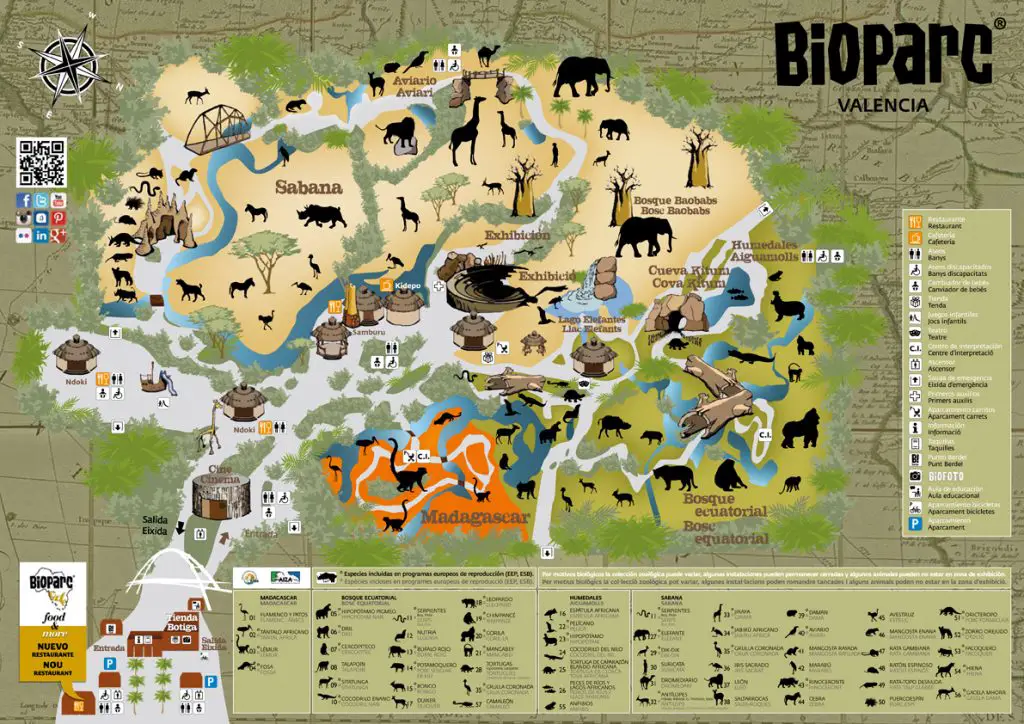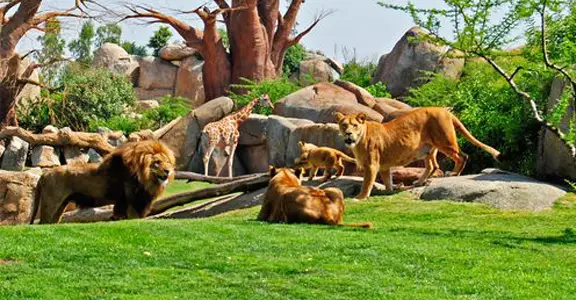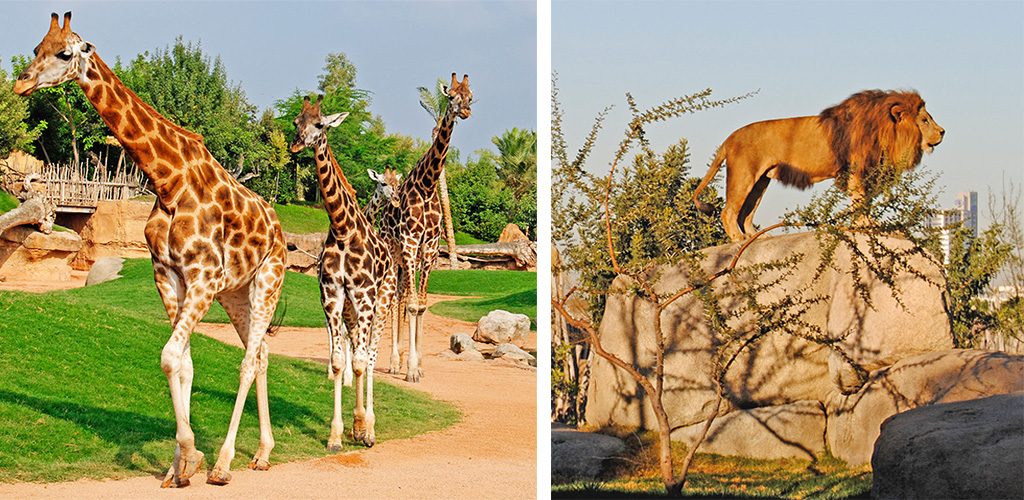
Bioparc Valencia
Bioparc Valencia is a unique 10-hectare (25-acre) zoo-park in Valencia, Spain. It is located at the north end of Valencia’s unusual Turia river-park. Opened in 2008, most of the animals moved to the new Bioparc facilities from the old city’s zoo which closed that same year.
The Bioparc has introduced millions of visitors to the innovative concept of the zoo, called zoo immersion, which consists of immersing visitors into the animal’s habitat instead of using traditional cages and enclosures. By not using the traditional railings and bars common to many zoos, a more authentic presentation is achieved that is healthier for the animals and more educational for the visitors. Using rivers, ponds, streams, rocks, plants and glass to separate visitors from the animals creates a clearer understanding of how the animals would appear in their native environment. Great care has been taken to reproduce the Eco-systems of the many species in the Bioparc, including an important collection of African plants such as the iconic baobab tree.
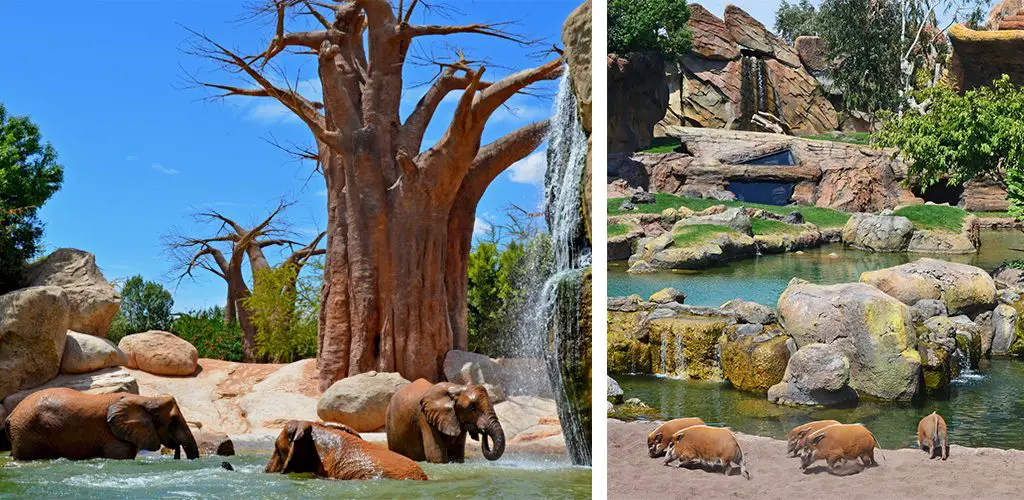
Bioparc Valencia
With over 4000 animals living at the Bioparc, great effort has been made to duplicate the conditions of their natural habitat. Within the large African Savannah zone, the zoo’s largest section, herds of antelopes and rhinoceroses can be seen as well as lions on rocky vantage points and the dens of hyenas and warthogs. Explore the leafy acacia forest and grassland. Observe zebras, giraffes and antelopes and look for storks walking gracefully in the wetlands. Peek into an aardvark burrow and find out about the unusual life of the underground mole rat.
Explore the Equatorial Forest zone and see a troupe of gorillas, herds of buffalo’s, tree-bound leopards and also elephants, hippopotami, crocodiles and colored fish. Here the visitor can see Kitum Cave, a replica of a Kenyan mountainside cave while elephants graze in a herd. Discover a diverse selection of species co-existing in the tropical forest. The gorillas and other primate species rule the treetops while bush pigs and buffaloes wander about the forest floor. View the wetlands ecosystem to see hippopotamuses and crocodiles sharing the water with amphibians and water birds.
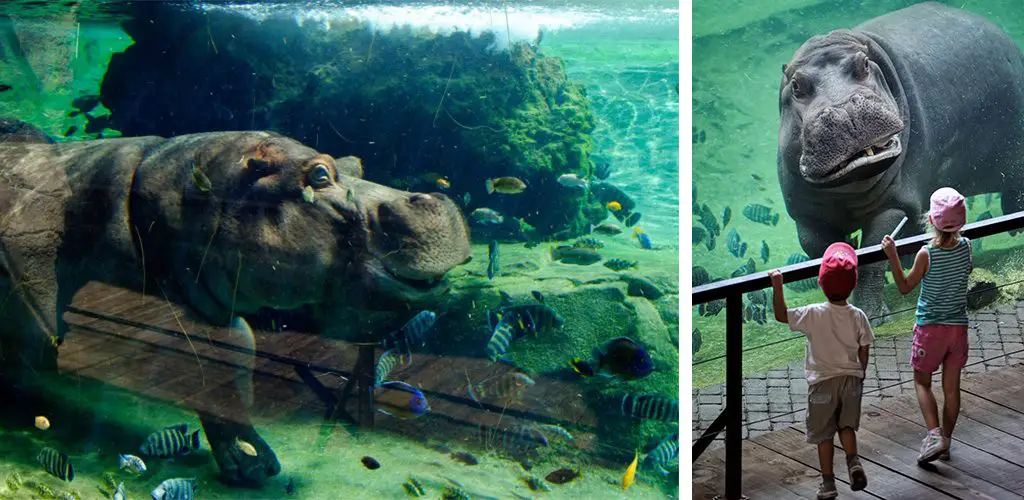
Bioparc Valencia
Strongly committed to sustainability and conservation, the Bioparc recycles more than 95 percent of the water that it uses as well as generates energy to heat water using a large number of solar panels throughout the zoo. Many of the species at the zoo are included in European conservation breeding programs, and one of the primary objectives of the Bioparc include educating and increasing awareness of visitors regarding care of and respect for the environment.
Bioparc Valencia is a new concept in zoo design with its zoo-immersion philosophy. When entering the more than 100,000 m2 park, the visitor feels totally submerged in the wild habitats that have been recreated here: the Savannah, Equatorial African Jungle and Madagascar zones await.
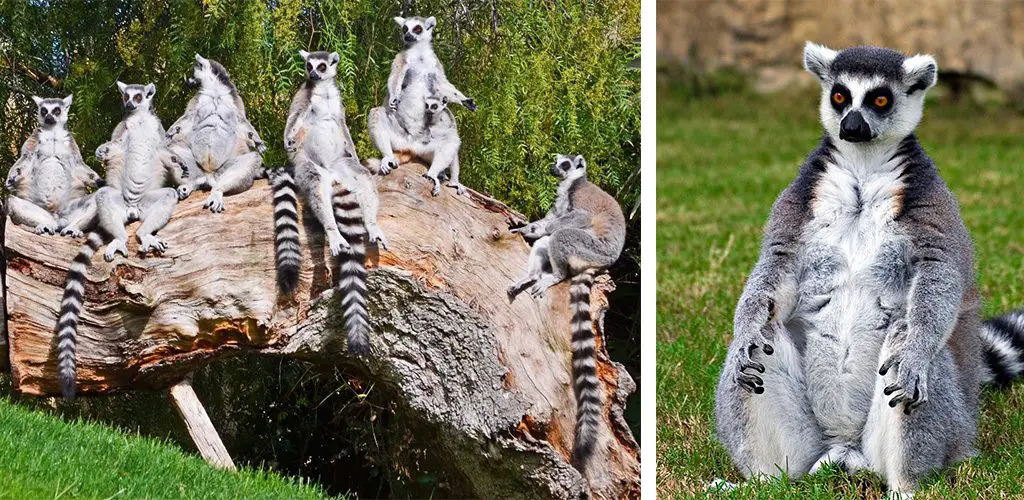
Bioparc Valencia
The animals in the Madagascar zone are not found anywhere else in the world and the zoo’s African island-themed exhibit has its own share of endangered species, including the grey bamboo lemur and banded chameleon. Learn about Madagascar at the Interpretation Center and find out about the rapid extinction of species during the 17th century and what the now-extinct 3-metre (10-foot) elephant bird would have looked like.
Visit the Bioparc’s open-air amphitheater to see animal presentations. The theater is surrounded by acacia and baobab trees which provide a stunning backdrop for the shows. See how an osprey catches fish with its sharp talons and how jackals and vultures interact in bird and mammal shows.
Bioparc Valencia is a 10-minute drive or a 40-minute walk from central Valencia. Pay to park on-site. Bus stations are located near the zoo’s entrance. Bioparc Valencia is open seven days a week. Ticket booths are open from 10:00 AM to half an hour before Bioparc closing, however closing hours at Bioparc can change during the year, depending on the length of the day. Some animals may not be visible to the public at the end of the day because of weather or lighting conditions.

